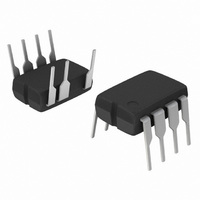NCP1028P100G ON Semiconductor, NCP1028P100G Datasheet - Page 26

NCP1028P100G
Manufacturer Part Number
NCP1028P100G
Description
IC SWIT HV 8DIP
Manufacturer
ON Semiconductor
Datasheet
1.NCP1028P065G.pdf
(29 pages)
Specifications of NCP1028P100G
Output Isolation
Isolated
Frequency Range
90 ~ 110kHz
Voltage - Input
7.2 ~ 10 V
Voltage - Output
700V
Power (watts)
25W
Operating Temperature
0°C ~ 150°C
Package / Case
8-DIP (0.300", 7.62mm), 7 Leads
Pin Count
7
Mounting
Through Hole
Package Type
PDIP
Case Length
10.16(Max)mm
Case Height
3.44(Max)mm
Lead Free Status / RoHS Status
Lead free / RoHS Compliant
Available stocks
Company
Part Number
Manufacturer
Quantity
Price
Company:
Part Number:
NCP1028P100G
Manufacturer:
ON Semiconductor
Quantity:
9
value N
an MUR160 represents a good choice. One major
drawback of the RCD network lies in its dependency upon
the peak current. Worse case occurs when I
maximum and V
of all three but it offers the best protection degree. If you
need a very precise clamping level, you must implement a
Zener diode or a TVS. There are little technology
differences behind a standard Zener diode and a TVS.
However, the die area is far bigger for a transient suppressor
than that of Zener. A 5.0 W Zener diode, like the 1N5388B,
will accept 180 W peak power if it lasts less than 8.3 ms.
If the peak current in the worse case (e.g. when the PWM
circuit maximum current limit works) multiplied by the
nominal Zener voltage exceeds these 180 W, then the diode
will be destroyed when the supply experiences overloads.
A transient suppressor like the P6KE200 still dissipates
5.0 W of continuous power, but is able to accept surges up
to 600 W @ 1.0 ms. Select the Zener or TVS clamping
level between 40 to 80 V above the reflected output voltage
when the supply is heavily loaded.
high impedance line very short, like the brown-out signal
and the OPP input if used.
Application Diagram
output uses a TLV431 whose low bias current represents an
advantage for low standby power switch mode supplies.
The secondary side features an additional LC filter needed
Figure 44c: This option is probably the most expensive
When routing the printed circuit, it is important to keep
Figure 46 displays the final application schematic. The
clamp
is usually selected 50-80 V above the reflected
(V
out
out
+ V
is close to reach the steady-state value.
f
). The diode needs to be a fast one and
Figure 45. A possible PCB arrangement to reduce the thermal resistance
peak
and V
junction-to-ambient.
http://onsemi.com
in
are
NCP1028
26
Power Dissipation and Heatsinking
controller, it is mandatory to properly manage the heat
generated by losses. If no precaution is taken, risks exist to
trigger the internal thermal shutdown (TSD). To help
dissipating the heat, the PCB designer must foresee large
copper areas around the PDI7 package. When surrounded
by a surface greater than 1.0 cm@ of 35 mm copper, it
becomes possible to drop the thermal resistance
junction-to-ambient, R
dissipate more power. The maximum power the device can
thus evacuate is:
which gives around 930 mW for an ambient of 50°C and a
maximum junction of 120°C. The losses inherent to the
switch circuit R
the final prototype evaluation must include board
measurements to confirm that the junction temperature
stays within safe limits. Figure 45 gives a possible layout
to help dropping the thermal resistance. When measured on
a 70 mm (2 oz.) copper thickness PCB, we obtained a
thermal resistance of 75°C/W.
to remove unwanted spikes, although less problematic than
in DCM operation. On the primary side, a resistive network
senses the input bulk voltage and prevents the controller
from turning on for input voltages below 100 Vdc. The
auxiliary winding delivers 20 V nominal and thus offers
comfortable margin when the converter enters standby. As
we do not use any OPP, pin 7 goes to ground and offers
extended possibility to layout more copper area.
The NCP1028 hosting a power switch circuit and a
DS(on)
P max +
can be theoretically evaluated, but
qJA
down to 75°C/W and thus
T j max -T amb max
R qJA
(eq. 22)










